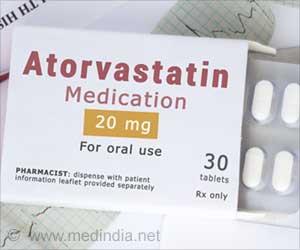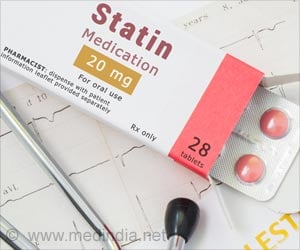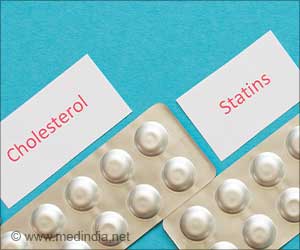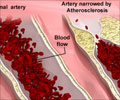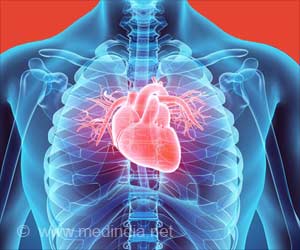A recent study by HKU-Harvard found that statins reduce the risk of cardiovascular disease by 20% in elderly individuals.

Benefits and Risks Associated With Statin Therapy for Primary Prevention in Old and Very Old Adults: Real-World Evidence From a Target Trial Emulation Study
Go to source). The groundbreaking research represents a major achievement, as it offers real-life data on the use of statins in elderly individuals using progressive analytical procedures. The results were released in the journal, Annals of Internal Medicine.
‘Cardiovascular diseases (CVDs) are responsible for the highest number of fatalities worldwide, claiming approximately 17.9 million lives annually. #statin #Cardiovasculardisease #medindia’





Do Statins Reduce Risk of Cardiovascular Diseases in Elderly Patients?
CVD poses a significant healthcare burden on a global scale, especially among aging populations. The effective management of high cholesterol plays a vital role in preventing CVDs. The most recent 'Population Health Survey' conducted in Hong Kong revealed that 65.6% of individuals aged 65-84 have high cholesterol levels.Statins are prescribed to reduce the risk of CVD-related illness and death due to their beneficial impact on lipid levels, anti-inflammatory properties, and ability to stabilize plaque formations (2✔ ✔Trusted Source
Statin Use for the Primary Prevention of Cardiovascular Disease in Adults
Go to source).
Despite the long-standing use of statins to enhance lipid profiles and lower the risk of CVDs, there remains a lack of consensus regarding their use for primary prevention in patients aged 75 and above in current international clinical guidelines. The uncertainty surrounding statin use in this demographic is partly due to the limited representation of elderly individuals in randomized controlled trials (RCTs), leaving this crucial clinical issue unresolved in real-world scenarios. This research utilized real-world data to assess the long-term advantages and drawbacks of statin therapy in primary prevention among older adults, aiding in decision-making regarding statin initiation in this growing population.
Statin Therapy: Reduction in Risk of Cardiovascular Diseases
The study was led by Professor Eric Wan Yuk-fai and his research team at the Department of Family Medicine and Primary Care in the School of Clinical Medicine and with the Department of Pharmacology and Pharmacy of HKUMed. The team evaluated the electronic medical records, from January 2008 to December 2018, of more than 80,000 elderly individuals in Hong Kong with suboptimal lipid levels and high-risk conditions such as diabetes or other risk factors for CVDs. The research focused on the correlation between statin therapy and the incidence of cardiovascular diseases in this specific group, using a unique analytical method called target trial emulation. This method included the critical elements of randomized controlled trials in study design for observational studies, and this effectively minimized the biases commonly found in traditional observational research.The study results suggest that consistent use of statins was associated with a 21% decrease in relative risk and a 5% decrease in absolute risk in CVDs, over five years for individuals aged 75–84. For those aged 85 or older, the relative risk reduction was even more significant at 35%, with an absolute risk reduction of 12.5% after five years. Furthermore, the research revealed no elevated risk of major adverse events such as liver dysfunction or myopathies linked to statin use in this particular group.
Advertisement
‘These findings have significant implications for informing clinical decisions regarding the initiation of statin therapy for this increasingly large population group,’ said Professor Cindy Lam Lo-kuen, Danny D B Ho Professor in Family Medicine, Department of Family Medicine and Primary Care, School of Clinical Medicine, HKUMed. ‘This study also pioneered a new research method to explore many more important but unanswered clinical questions related to the care of the elderly in real-world practice.’.
Advertisement
Professor Eric Wan Yuk-fai emphasized, ‘The older population, especially very old adults, are generally underrepresented in the RCTs, leading to a lack of high-quality evidence on treatment for this specific population group,’.
‘The innovative approach adopted in this study has the potential to generate high-quality evidence in the field of geriatric medicine, thereby advancing our understanding and improving healthcare outcomes for older populations.’.
References:
- Benefits and Risks Associated With Statin Therapy for Primary Prevention in Old and Very Old Adults: Real-World Evidence From a Target Trial Emulation Study - (https://www.acpjournals.org/doi/10.7326/M24-0004)
- Statin Use for the Primary Prevention of Cardiovascular Disease in Adults - (https://jamanetwork.com/journals/jama/fullarticle/2795522)
Source-Medindia

